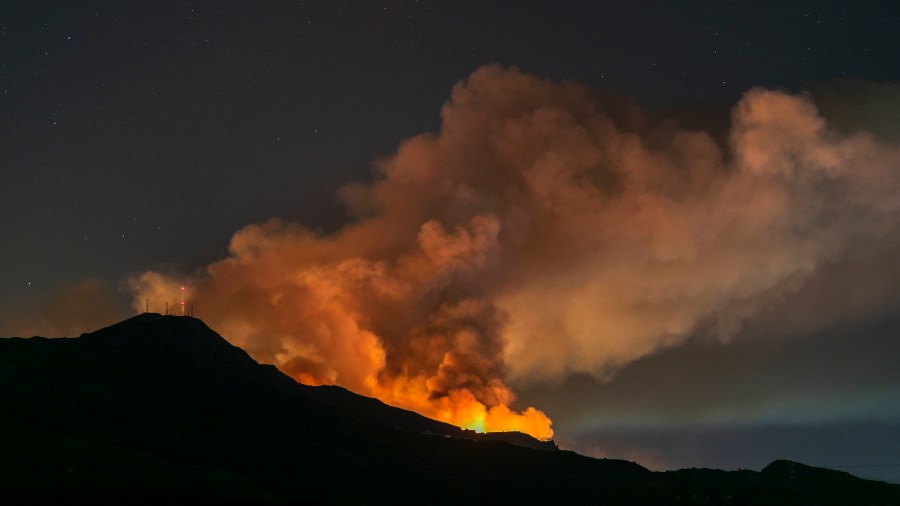Active wildfires are fast-moving disasters, and the fallout can be terrible, too

Earlier this fall, NASA and its Jet Propulsion Laboratory sent two planes flying into the plumes of wildfires in Northern California. The planes were on a special mission to gather air samples from an active fire.
“Carbon dioxide, carbon monoxide, nitrogen, nitrous oxide, particulate matter” specifically, said Natasha Stavros, an applied science systems engineer at JPL.

She said flying planes very close to the flames to grab air samples is necessary because the existing data NASA generates comes from too far away. Those high-resolution satellite images from space — useful for tracking and even anticipating the path of a fire — can’t give us enough information about the air we breathe here on Earth.
But air samples can tell us about the fuel composition, Stavros said, and “how high the plume is being injected into the atmosphere and how dense that plume is.”
Doctors and scientists are hungry for that data because they want to be able to answer questions about how much ash will be trapped in the atmosphere once the flames are out. How will our breathing and overall health be affected?
“All of these are things that will affect how far the emissions will carry,” said Stavros. “We’ve actually seen fires from Canada affecting air quality in Florida.”
Each of the NASA planes has a mission. The DC-8 flies downwind of the fire, with hoses attached to the outside of the plane sucking air into empty tanks. Those tanks then get an evaluation back at the lab.
And the ER-2, which cruises at 70,000 feet — about twice as high as commercial flights — uses high-tech sensors to detect how hot the fire is and even measure the height of the flames.
Scientists can use this data to extrapolate downwind effects of the fires, because the super tiny particulate matter, too small for the naked eye to see, literally affects every living organism, born and unborn.
“They’ve actually also recently found some of those particulates on the lining of a fetus,” Stavros said. “The mother was breathing it in and it literally affected her baby.”
What doctors need to know is what happens long term when the respiratory system, and even the lining of the amniotic sac where babies grow, is exposed for weeks or months to invisible fallout from a wildfire.
And Stavros said the missions are targeted to help find answers to try and “get at the relevant information for decision-making so that decision-makers can make it quickly in an informed way.”
Climate change means wildfires are increasingly inevitable, and NASA and JPL have launched this research to help figure out how to live with that new normal.
Related links: More insight from Molly Wood
Australia has been fighting horrible bush fires in recent months that have killed six people and created really toxic air. In Sydney, hospital visits were up by 10%, and air quality there was 12 times above what’s considered hazardous.
Speaking of NASA’s data, the organization found that fires in New South Wales and Queensland pumped out almost half of Australia’s yearly greenhouse gas emissions, and because so much forest land is either burned or compromised by smoke, its usual ability to absorb all that carbon dioxide is also greatly reduced. The TLDR: The fires caused by hotter and drier weather resulting from climate change are also contributing to more climate change.
California’s carbon emissions also went up dramatically during the 2018 fire season. That’s a bummer. Sorry, y’all, we’ll get into the holiday spirit soon!
The future of this podcast starts with you.
Every day, the “Marketplace Tech” team demystifies the digital economy with stories that explore more than just Big Tech. We’re committed to covering topics that matter to you and the world around us, diving deep into how technology intersects with climate change, inequity, and disinformation.
As part of a nonprofit newsroom, we’re counting on listeners like you to keep this public service paywall-free and available to all.
Support “Marketplace Tech” in any amount today and become a partner in our mission.





















